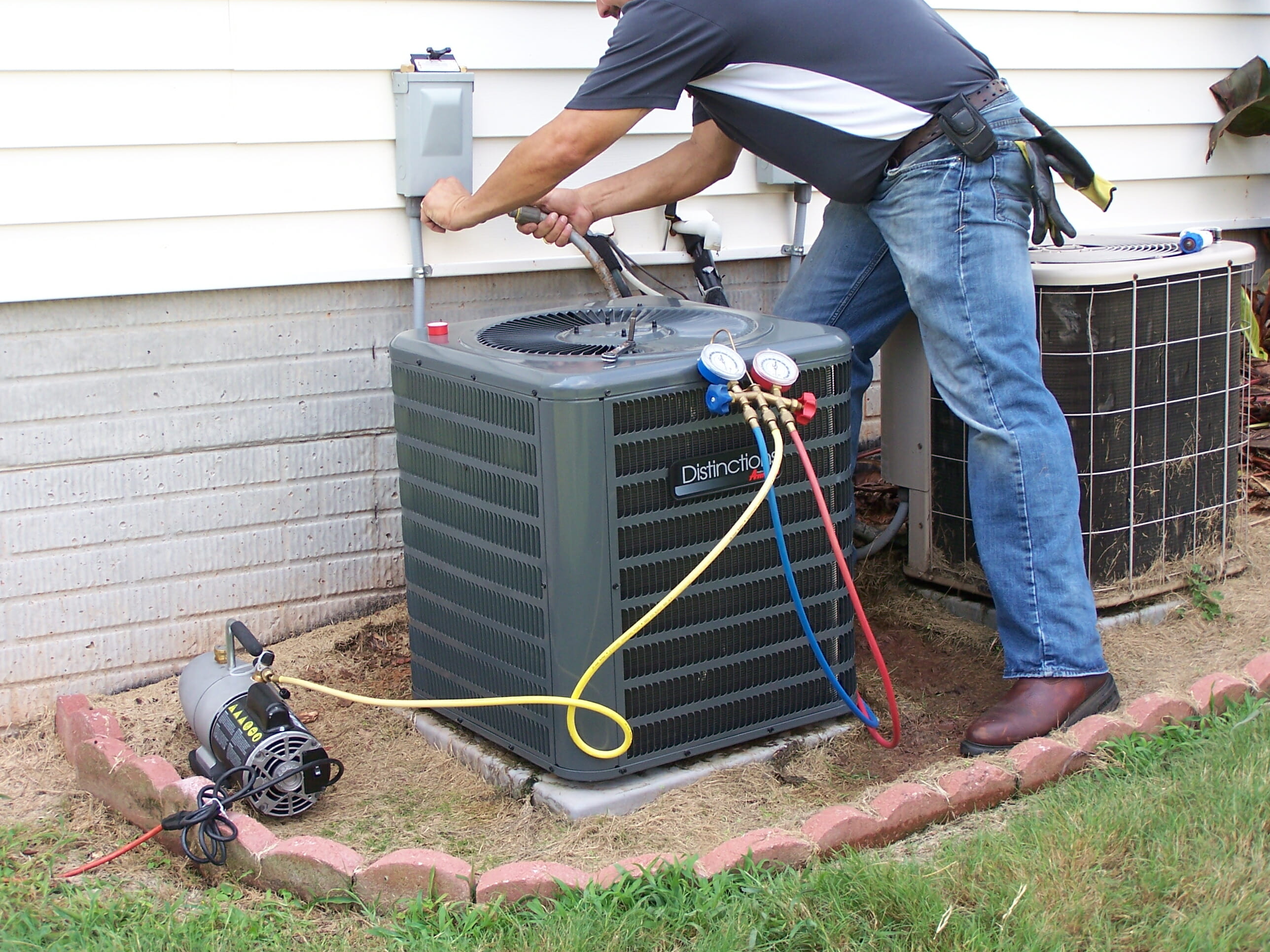AC Installation Secrets: The Vacuum Whisperer

So, you're getting a new AC unit. Exciting, right? But amidst the buzz of BTUs and SEER ratings, there's a crucial step often overlooked: the AC vacuum procedure. Yeah, it sounds boring, like something your nerdy neighbor would obsess over. But trust me, this seemingly mundane process is the secret sauce to a happy, efficient, and long-lasting AC system. Ignoring it? Well, that's like buying a Ferrari and filling it with tap water. You're just asking for trouble.
Creating a vacuum in an AC system during installation isn't about making it spotless, though cleanliness is a perk. It's about eradicating unwanted guests – namely, air and moisture. These sneaky intruders can sabotage your AC's performance, leading to decreased efficiency, increased energy bills, and a shorter lifespan. Think of it as prepping the system for its refrigerant lifeblood; a pure, uncontaminated environment ensures optimal performance.
Back in the day, when AC units were as simple as a block of ice and a fan, the idea of evacuating the system wasn't really a thing. But as technology advanced, so did the need for precision. The introduction of refrigerants containing chlorofluorocarbons (CFCs) and subsequently hydrofluorocarbons (HFCs) highlighted the importance of a leak-free, contaminant-free system. Not only for performance but also for environmental reasons. Thus, the practice of vacuuming became standard procedure, a crucial step in ensuring proper AC function.
The core issue with not properly vacuuming an AC system revolves around those pesky air and moisture molecules. Air can cause increased pressure and reduced cooling capacity, while moisture can react with the refrigerant, forming corrosive acids that damage the system's internal components. This can lead to costly repairs, premature failure, and an AC unit that performs about as well as a hamster wheel on a hot day.
Evacuating an AC system involves using a specialized vacuum pump to remove air and moisture from the refrigerant lines and indoor coil. This process creates a vacuum, measured in microns, a unit of pressure. The lower the micron reading, the higher the vacuum level, and the more thorough the evacuation. Think of it as sucking all the bad stuff out, creating a pristine environment for the refrigerant to do its thing.
One of the key benefits of proper AC evacuation is increased system efficiency. By removing air and moisture, the refrigerant can absorb and transfer heat more effectively, leading to lower energy consumption and a cooler, more comfortable home. This also translates into lower energy bills, putting more money back in your pocket.
Another advantage is enhanced system longevity. By eliminating corrosive contaminants, the internal components of the AC unit are protected from damage, extending the lifespan of the system. This means fewer repairs, less downtime, and a longer return on your investment.
Finally, proper evacuation helps ensure optimal refrigerant performance. A clean, contaminant-free system allows the refrigerant to operate at its peak efficiency, delivering optimal cooling performance and maximizing the comfort of your home.
A step-by-step guide to vacuuming an AC system during installation usually involves connecting a vacuum pump to the system, running the pump for a specific period to achieve the desired vacuum level, and then isolating the system to ensure the vacuum is maintained. This should always be performed by a qualified HVAC technician.
Advantages and Disadvantages of AC System Evacuation
| Advantages | Disadvantages |
|---|---|
| Increased Efficiency | Requires specialized equipment and knowledge |
| Enhanced System Longevity | Can be time-consuming if done improperly |
| Optimal Refrigerant Performance | Potential for damage if not performed correctly |
Best practices include using a micron gauge to monitor the vacuum level, ensuring all connections are leak-free, and following manufacturer recommendations for evacuation time and procedures.
FAQs:
1. Why is vacuuming important? It removes harmful air and moisture.
2. How long does it take? It varies based on system size and other factors.
3. Who should do it? A qualified HVAC technician.
4. What happens if it's not done? System failure and reduced efficiency.
5. What equipment is used? A vacuum pump and micron gauge.
6. What is a micron? A unit of pressure used to measure vacuum levels.
7. How can I verify it was done correctly? Check the micron gauge reading and ask for documentation.
8. What are the signs of a poorly evacuated system? Reduced cooling and increased energy bills.
In conclusion, while the vacuum process in AC installation might seem like a minor detail, it plays a monumental role in the overall performance, lifespan, and efficiency of your system. By ensuring proper evacuation, you're not just investing in a cool and comfortable home, but also in the long-term health and efficiency of your AC unit. Don't let this crucial step be overlooked; talk to your HVAC installer and ensure they prioritize proper evacuation techniques for a truly optimized AC experience. This seemingly small step can save you money, headaches, and ensure your AC keeps you cool for years to come. Remember, a properly evacuated AC system is a happy AC system, and a happy AC system means a happy you.
Deconstructing skip etiquette a uk homeowners guide
Germanys 14 day wind and weather forecast your ultimate guide
Perfect strawberry bliss banishing bugs from your berries













